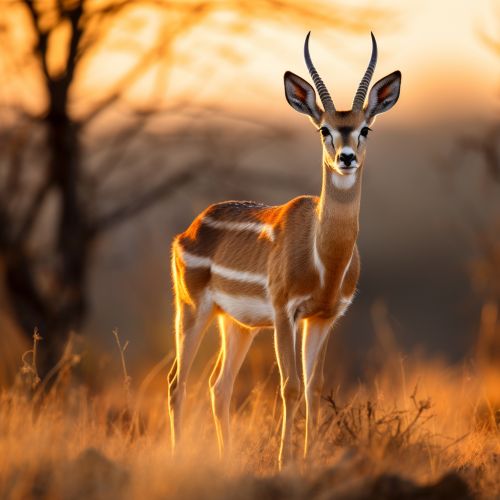Gazella cuvieri
Taxonomy and Description
The Gazella cuvieri, commonly known as the Cuvier's Gazelle, is a species of gazelle named after the French naturalist Georges Cuvier. It is a medium-sized ungulate, characterized by its slender body and long legs. The species is endemic to the North African region, specifically in the countries of Algeria, Tunisia, and Morocco.


The Gazella cuvieri is part of the Bovidae family, which includes other antelopes, gazelles, and bovines. It belongs to the genus Gazella, which is composed of around 14 species. The species was first described by French zoologist Isidore Geoffroy Saint-Hilaire in 1844.
The Gazella cuvieri has a body length ranging from 95 to 105 cm, a shoulder height of 60 to 70 cm, and a weight of 20 to 35 kg. It has a light brown coat with a white underbelly and a distinctive dark stripe running along the side of its body. The gazelle's horns, present in both sexes, are lyre-shaped and can reach lengths of up to 40 cm in males and 35 cm in females.
Habitat and Distribution
The Gazella cuvieri is found in a variety of habitats, including arid mountainous regions, Mediterranean forests, and semi-desert environments. It prefers areas with dense vegetation, which provides cover from predators and a rich source of food. The species is highly adaptable and can survive in areas with extreme temperatures and limited water resources.
The distribution of the Gazella cuvieri is restricted to North Africa. It is primarily found in Algeria, Tunisia, and Morocco. The species was once widespread across the region, but its range has significantly reduced due to habitat loss and hunting.
Behavior and Ecology
The Gazella cuvieri is a diurnal species, most active during the early morning and late afternoon. It is a selective feeder, primarily consuming leaves, shoots, and fruits of various plant species. During periods of drought, the gazelle can survive on plants with high water content, reducing the need for drinking.
Socially, the Gazella cuvieri is typically found in small groups of 2 to 5 individuals, usually consisting of a male and several females. During the mating season, males become territorial and engage in ritualized fights for dominance and mating rights.
Conservation Status
The Gazella cuvieri is listed as Endangered on the IUCN Red List due to its declining population and loss of habitat. The main threats to the species are overhunting and habitat degradation caused by agricultural expansion and urbanization. Conservation efforts are currently focused on habitat preservation and the establishment of protected areas.
